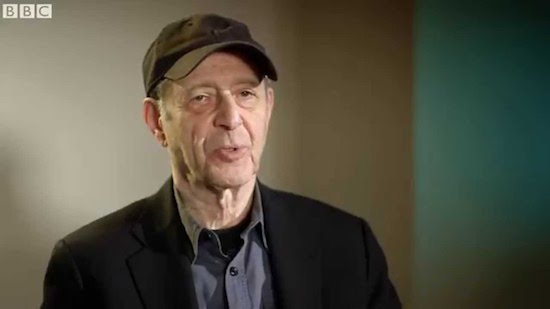In Patrick Ness’s young adult trilogy Chaos Walking, a teenage girl arrives on a planet to find that all the women have disappeared, and the men have contracted something called The Noise, where all their internal thoughts are audible. Strap yourselves in kids, because this is what it’s like watching the BBC’s two-part survey of Minimalism: La Monte Young and Jarvis Cocker prattling on about the Dream House, eliminating the work done in the last two decades to put previously neglected figures back into the historical record.
This is worse than leaving Brix out of a history of The Fall. It’s lazy, myopic, and suggests that research didn’t reach much beyond La Monte’s Wikipedia page and a bio for Steve Reich from last time Clapping Music was on at The Barbican.
Being ignored is very different to being forgotten, and while they have been ignored for this two-parter, plenty of people haven’t forgotten about Pauline Oliveros and Joan La Barbara, both central and crucial figures in the scenes discussed. Or Meredith Monk, Eliane Radigue or Laurie Spiegel, all of whom are still composing, the latter of whom is presented as an abstracted and unconnected composer, roped in to give some historical context. Charlotte Moorman, shown performing with John Cage, isn’t named at all.
Drastic reassessments of the narratives of minimalism and electronic music have happened in the last two decades. La Barbara’s work is being reissued (I put out some of it on my Arc Light Editions label), pieces by Oliveros and Radigue are performed regularly, and there are a slew of box sets and reissues making this work available and accessible. But without these people being included in mainstream histories, the story of minimalism is inaccurate to the point of fiction.
This is not just about women either, other crucial figures like Tony Conrad are left out of the BBC’s story. Conrad’s epic piece Four Violins was recorded in 1964, the same year In C was composed, but La Monte has done a fantastic job of erasing people from the narrative. Conrad was a core member of the Theatre Of Eternal Music along with Young, Marian Zazeela, and John Cale, with Terry Jennings, Angus Maclise and others. A 1965 recording by the group that surfaced in 2000 dubbed it the "big bang" of minimalism. The democratic aspect to the group was crucial, although Young completely reneged on that commitment.
Young’s hubris has largely been swallowed whole, the fictions absorbed, only now being reconsidered, like other musical histories. While the debate about the history of minimalism is long like, well, a minimalist composition, it doesn’t require the absolutes that Hazlewood and the BBC have presented: "Four revolutionary composers changed what we thought of as music," says Hazlewood. Not four of a larger scene, or groups, no, just these four men, one of whom has barely released any music, ever.
While some simplification is unavoidable (any history has potential to go full Tristram Shandy in its telling) there is a duty not to misrepresent. The land-grab and apparent lack of research is egotistical, presents the reinvention of music in a particular scene the work of singular (male) figures, when the reality is much more complex.
For example, minimalism’s origin story also took a handbrake turn in the last decade with the emergence of a piece by one-time composer Dennis Johnson – a peer of La Monte and Riley – who all but disappeared after composing November, a massive henge of early minimalism for piano, four years before In C or The Well-Tuned Piano (or Four Violins) existed. He’s not a key figure, and did little else, but this curious precursor demands attention.
We are in the middle of a transition period, where the work and influence of a host of previously neglected composers is being unearthed. The imperative now – an imperative which forms an emancipatory possibility – is not to swallow older histories whole. The point that important characters, and especially women, have been neglected applies far beyond minimalism. Brunel’s Clifton Suspension bridge in Bristol was largely possible because of a patent taken out by an ‘amateur’ engineer called Sarah Guppy who gave him the plans for free. In music, Histories of COUM and Throbbing Gristle are being rewritten following the publication of Cosey’s memoir, and Brix has done a similar thing for The Fall. In a recent Q&A to mark the paperback publication of her book, Cosey told Laura Snapes: "I was written out of COUM, I didn’t exist," naming a slew of others that had also been erased from the story by the hitherto dominant narrative set out by Genesis P*Orridge.
Conrad collaborator and composer Jennifer Walshe knows this well, exploiting the instability of origin stories for a project called Aisteach, which fictionalised a whole series of early Irish avant-garde composers (including the fantastic Guinness Dadaists). If those with a platform are making it up, the project appears to ask, why not go all in and make the whole thing up?
History has never been stable, but it is spinning on its axis. In art, literature and further, possibilities for research and cataloguing mean that new connections, formerly lost histories, and widespread challenges to the idea of the canon mean that the past is being filled in, made complex, beyond these mono-narratives.
Musical histories are currently being adjusted across the board, not least the story of minimalism, although you wouldn’t have known this if you looked to Hazlewood for direction. History always favours the winners, but the context for those victories is in the midst of reassessment. It’s a shame this series failed to take note.
(Thanks to Natalie Sharp for the title and the subsequent discussion.)


